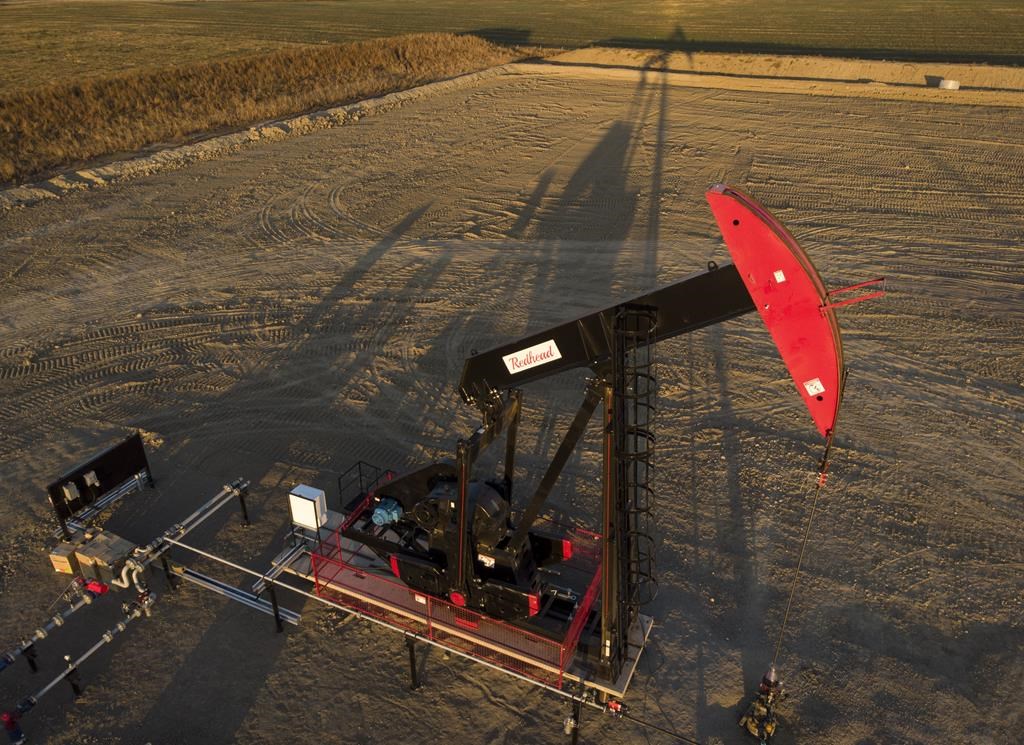
TORONTO — A surprise production cut by the Organization of Petroleum Exporting Countries and its allies (OPEC plus) is just one factor lifting the spirits of Canada’s energy sector executives these days, as experts say crude prices could return to US$100 a barrel later this year.
“Buoyant” and “extremely positive” were some of the terms used by CEOs on Tuesday to describe the mood at a major oil and gas conference in Toronto, which took place just two days after the unexpected move by OPEC sent oil futures surging.
It was only a few weeks ago that oil prices fell to the mid-$60 range due to concerns over bank failures south of the border.
But the OPEC news has sent the price for North American crude benchmark West Texas Intermediate (WTI) above US$80 for the first time since January. And attendees at Tuesday’s conference sponsored by BMO and the Canadian Association of Petroleum Producers (CAPP) talked about a potential return to triple-digit oil prices by the fall.
“I think this was a bit of a shock to everyone with how quickly it happened,” said Craig Bryksa, CEO of Crescent Point Energy Corp. — which last week announced it has reached a deal to buy Spartan Delta Corp.’s Montney oilfield assets for $1.7 billion — in an interview.
“That being said, the mood at this conference is extremely positive. There’s a little bit of a spring in everybody’s step.”
Canadian oil and gas companies reaped record profits in 2022 as the war in Ukraine and global fears about energy security drove commodity prices sky-high in the spring of last year.
But prices have been weighed down so far in 2023 by uncertainty over the stickiness of global inflation and the chance of a coming economic recession.
However, BMO Capital Markets’ head of energy Bradley Wells said the bank has always had a bullish outlook for the Canadian energy sector for this year, based on what it believes is tight global supply and an overall lack of investment in oil and gas production over the past several years.
He said that OPEC’s announced cut of more than a million barrels per day could easily tilt oil prices into $100-per-barrel territory within a few months.
“That’s certainly a possibility, by the end of this year and into the next year,” Wells said in an interview. “It’s definitely on the table again.”
“It’s a tight supply-demand dynamic to begin with, so when you’re talking about (OPEC’s cut), it’s not a rounding error. It actually is significant.”
For oil and gas executives, volatility has been the name of the game for much of the last decade, so the OPEC news on its own isn’t enough to get most of them to pop the champagne.
“It depends on how long you’ve been doing this, how many cycles have you seen, how much scar tissue you have,” said Ian Dundas, president of Enerplus Corp., on Tuesday.
But Jonathan Wright, CEO of NuVista Energy, said there’s a feeling among many in the industry that after nearly a decade of downturn, Canadian oil and gas is back.
“I would say even without the OPEC cuts … there’s a lot of analysts calling for quite an increase in oil prices through the second half of the year,” Wright said in an interview.
Wright said he believes the war in Ukraine and its affect on global energy supply show that global investment in oil and gas has not grown at the rate it needs to.
“And that’s because of everyone investing in green (energy), and forgetting that we still need oil and gas,” he said.
“I hope we can find some balance in the middle, because if we don’t, we’re going to end up having shortages.”
In March, CAPP forecast that oil and natural gas investment in upstream production in Canada will hit $40.0 billion in 2023, surpassing pre-COVID investment levels.
In February, the International Energy Agency said global oil demand is forecast to rise by two million barrels per day in 2023.
But the IEA also predicts that while global oil demand will rise each year until 2030, it will peak soon after as electric vehicles and efficiency gains undermine demand.